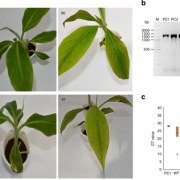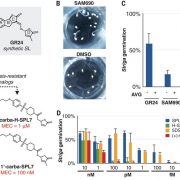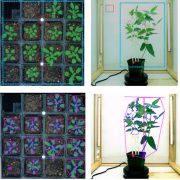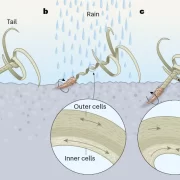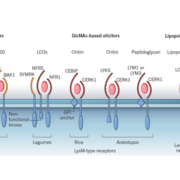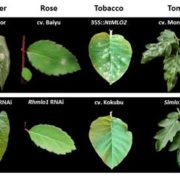Bridging the Gap between Science and the Field
Many journal articles in the plant sciences – including some of mine – finish with statements like “these findings can potentially contribute to solving the challenge of feeding the world’s growing population whilst saving the planet’s limited resources”. That is a noble ambition. Sadly, however, science is not always easily translated into results in the field. I currently see two main reasons.
The first is primarily practical. Academic plant scientists perform most of their work in model organisms. That is understandable, given the degree of homology in higher plants’ genetic architecture. Transferring findings from Arabidopsis to crop species and varieties that actually contribute to “feeding the world” is, however, often far from straightforward.
The second hurdle is more abstract, and slightly ironic. Scientists often publish their research results openly. The intent is laudable, but unfortunately overlooks the importance of an Intellectual Property strategy. (Patenting is one possibility, and there are several alternatives). The lack of attention to IP often makes the actual transfer of findings into action more complicated than authors anticipate.
Why is this second hurdle important? The plant science industry is going through difficult times, not least because of shrinking markets. Companies’ appetite for risk is correspondingly low. The thought of being the first to adopt an uncertain new technology without proper protection from potential competition is likely to scare off most management teams. Sadly, this is particularly the case for regions where increased productivity is most needed – developing countries in sub-Saharan Africa and South and South-East Asia. Several factors already deter the private sector from investing there. They include the small, fragmented markets and a challenging clientele (mostly farmers with small landholdings and limited finances). Frequently, the “enabling environment” is also missing: Infrastructure is poor, services for accessing finance and managing risk are missing, and government policies can cause further challenges. Expecting companies to venture into such markets without even IP protection is unrealistic. As a consequence, few African and southern Asian smallholders benefit from modern fertilizer blends, quality seed, new and improved varieties, or appropriate protection for their crops against pests and disease.

Figure 1: Basic requirements for functional farming systems
This is the interface where we at the Syngenta Foundation for Sustainable Agriculture work. We aim to bridge the gap between science and actual impact in the field. We scout for solutions and research results of relevance for smallholders in developing countries. With a range of partners (public, private and academic) we then develop strategies to adapt and transfer technologies to markets where they are needed. As a foundation, we do so on a not-for-profit basis, seeing ourselves as catalysts and market-makers. However, we firmly believe that the eventual product should be commercially viable. This is essential for its sustained delivery after our and our partners’ involvement has ended.
Example projects of the Syngenta Foundation include Tef breeding in East Africa and Cassava Seed Systems development. They are both further described below.
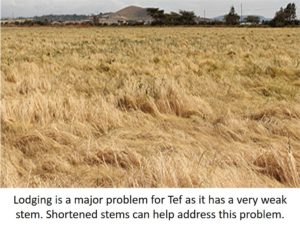
Tef breeding
Tef, a small grassy plant, is the number one cereal in Ethiopia and the staple crop for more than 100 million people in the Horn of Africa. As it is hardly known elsewhere, tef breeding for increased productivity has been neglected by international research and aid organizations. This had adverse effects on the crop’s yields, which remained at roughly 1 ton per hectare for decades. Together with plant scientists at the University of Bern and the Ethiopian Institute for Agricultural research (EIAR) we have used molecular breeding approaches (such as DMSO mutagenesis and TILING techniques) to breed for improved tef varieties. Target traits were shorter stems to avoid lodging, non-GM herbicide resistance and drought tolerance. These traits have subsequently been introgressed into local elite lines and are currently being disseminated to farmers across Ethiopia.
Cassava Seed Systems
Cassava is the most important source of calories in sub-Saharan Africa. It is a non-hybrid, clonally propagated crop. This makes production of new planting material (stem segments known as “seed”) and supply very challenging as multiplication rates (the ratio between parent plant and offspring) are rather low (at 1:8 compared to e.g. 1:300 for corn) and the shoot segments used for planting material are very perishable. As a consequence, many improved virus-resistant or herbicide-tolerant varieties are not reaching the farming communities as the production of planting material is too costly and time consuming. To address this, we have partnered with EMBRAPA (Brazil’s national crop research center) to develop smaller, more robust seed pieces. This was achieved by applying a mixture of protectants and growth stimulants to the planting material. That way, shoot pieces could be reduced from 20-30 cm to 8 cm. This had a very beneficial impact on multiplication rates and the logistics of supplying seed segments to remote regions. Currently, this technology is being transferred to Africa to support dissemination activities for improved cassava varieties.
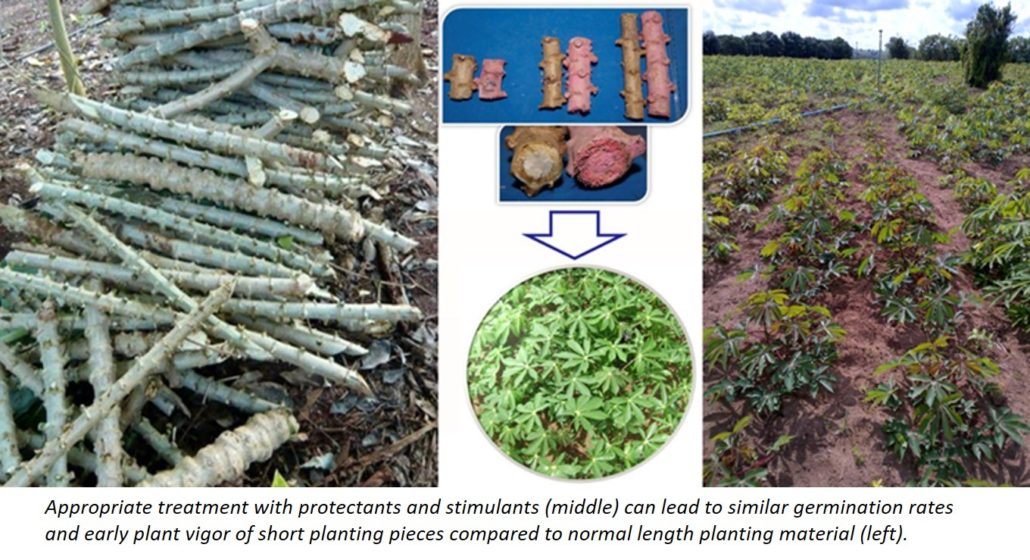
In general, areas of interest to the Syngenta Foundation include productivity increases (e.g. through breeding, but also other inputs such as plant nutrition and crop protection), and farmers’ access to finance and risk management. Increased productivity alone does not always make farmers better off, particularly where transport and storage infrastructure is poorly developed. So we also look at novel ways of linking smallholders to remunerative output markets. We are always interested in starting new partnerships in these areas. More information is available on www.syngentafoundation.org.


